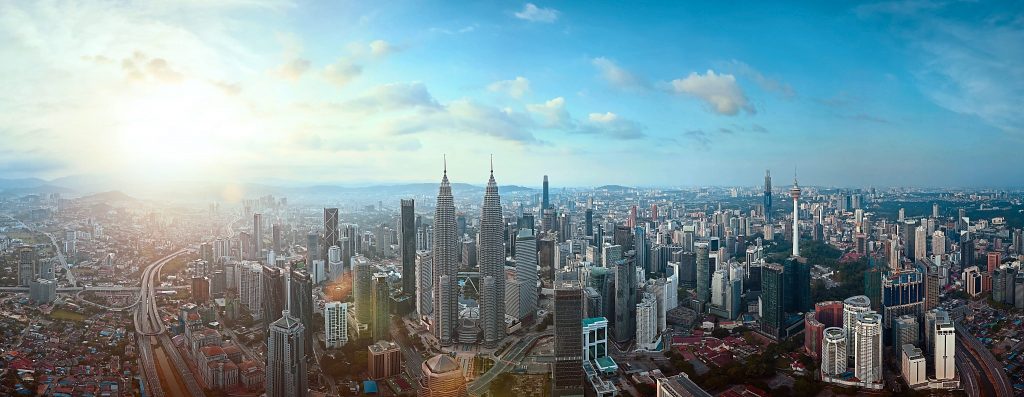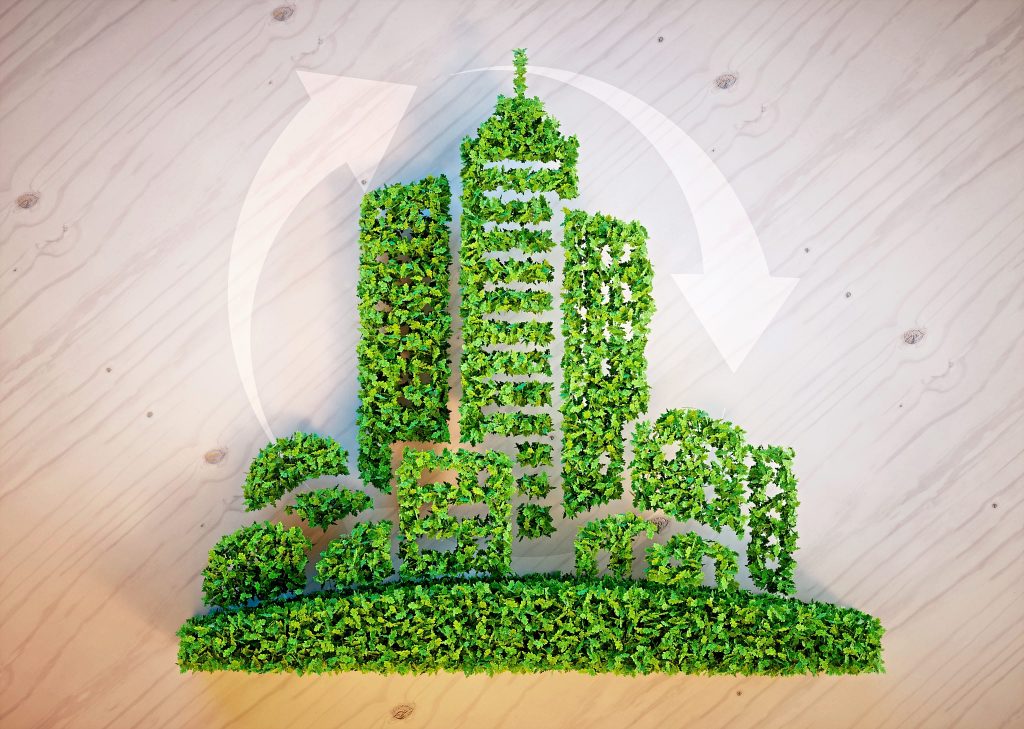Outlook remains positive
Despite disruptions like the pandemic, the basic need of a home remains as vital as ever

Panorama aerial morning view of beautiful Kuala Lumpur city skyline. Malaysia
By Joseph Wong
The general public has been talking about whether the property bubble will burst since 2012 when the volume and value of property transactions reached their peaks. It was the same tired old story that property prices would crash. But what was experienced instead was a slow slide downwards as the market started to become sluggish, a result of overbuilding in many sub-sectors leading to an overhang of giant proportions.
Then it became a long-drawn waiting game. People slowly started holding back their property buying plans but developers confidently continued to build in big quantities, driven by the then promising number of bookings. But as time passed and the number of actual purchases started to decrease, coupled with the incoming property stocks, the issue of overhang escalated into a worrying figure.
The political turmoil, economic slowdown and a host of other issues did not help the property industry, much less other sectors. And just as improvements in the property industry started to show towards the end of 2019, the world was hit with the Covid-19 pandemic the following year.

Property market on the road to recovery, said Shanker.
But there were valuable lessons learned. The first and foremost is that despite any disruptions like the pandemic, the basic need of having a shelter remains as vital as ever, if not more so, said Rahim and Co International Sdn Bhd real estate agency chief executive officer Siva Shanker. That the property market, as well as the nation’s economy, appear to be once again on the road to recovery is positively seen by everyone from developers to the end-users, he said.

Sustainable homes are in greater demand now.
What has changed?
The most significant difference that has incurred in the property sector post-pandemic is the demand for healthier and sustainable homes, he added.
From the many new developments that are underway, it can be confirmed that many developers are aware of this trend. Some even fully embrace this trend, like Gamuda Land.
“We preserve the existing contours of the land to give our homes natural views and lakeside and hillside settings. We preserve the trees that were there before us, with a focus on 70% native species across our developments, towards creating urban forests which reduce ambient temperatures, enhance liveability and sequester carbon.
“We preserve the topsoil during development to nurture the ecosystems in and around our communities. And we manage the land’s water runoff and channel it into lakes and ponds, allowing for better storm management, reducing flooding and helping to maintain the site’s water ecosystem,” said Gamuda Land product management unit executive director Jess Teng Poh Fern.
However, other components will still play their roles. Determinants like price, location and purpose will still be main factors, said real estate blog kopiandproperty.com founder and editor Charles Tan.
“Healthy and Sustainable developments should become popular, that’s for sure,” he quipped.

Three key issues must be addressed, said Soam.
Issues to be resolved
Real Estate and Housing Developers’ Association Malaysia (Rehda) president Datuk Soam Heng Choon pointed out that three key issues must be addressed to ensure that 2022 will be a better year for the property market.
These include the end-financing challenges, the slow and lack of digital technology adoption by developers and the negative buyers’ and market sentiment, as well as pressure from external market forces.
Financial institutions are still very risk-averse and too stringent in their assessment criteria to the detriment of prospective home buyers, he said. On the second issue, Soam said the developers’ inability to embrace digitalisation, especially relating to marketing and sales activities, impacted the number of home ownership. This was more evident among the medium and smaller developers in certain geographical areas.
Soam noted that the lockdowns had impacted home buyers’ sentiment, who have adopted a wait and see approach. “Home buyers are waiting for more certainty, in terms of improved economic trajectory and growth in 2022, where the economy will recover and grow before deciding to buy a property,” he said.
Prices likely to rise
If buyers are holding back with the expectation of further price drops, they need to think again, said Shanker, as the prices of new homes are expected to increase due to escalating material prices.
“Everything is going up. The building and construction material prices are increasing,” he said, pointing out that it will have an impact on future prices of homes.” Don’t expect lower prices next year,” he added.
The building and construction industry has acknowledged that the building materials prices have been rising on the steep side over the recent months. The increase has directly impacted the cost of doing business which has resulted in a 13% to 20 % hike in construction cost. Some items which have shown drastic increases include mild steel price, which went up by 41% and sand, which increased by 20% since October 2020.
“Such a situation has put companies’ already dwindling profit margins (if any) under pressure. Based on observations, among the major factors affecting the price increase are due to the surge in the costing of raw material, acute shortage of foreign workers in the country, increase in logistics cost, the upward trend in prices of crude oil, and the rise of energy costs.
“We are very worried that if these issues are not given urgent attention, the industry will suffer further and subsequently would adversely impact our sector and the country’ economic growth,” said a joint statement by several associations.
They include the Master Builders Association Malaysia, Rehda, Persatuan Kontraktor Melayu Malaysia, Persatuan Kontraktor Bumiputera Malaysia, Guild of Bumiputera Contractors Wibawa, The United Malaysia Contractors Association and Persatuan Kontraktor India Malaysia.

We expect the economy to bounce back in 2022, said Ansari.
Economic Outlook
The rapid pace of vaccination and new Covid medications are improving the outlook, which is expected to result in a jump in household spending and the desire to consume. All the same conditions are also likely to increase property demand and the formation of new households.
“We expect the economy to bounce back in 2022, matching corresponding growth in the global economy. The government is implementing both economic and fiscal stimulus, so we expect GDP growth to hit 6% next year.
“At 65% of GDP, exports are so significant that improvements in the global outlook and the resolution of the international supply chain will have outside positive impacts in Malaysia. Employment and household income are directly linked to housing demand.
“In 2022, we expect the economic reopening and government stimulus to drive both upwards. UOB (United Overseas Bank) economists are predicting unemployment to decline by six basis points to 3.6% for 2022. In sum, our forecast is for a growing economic recovery and significantly stronger prospects next year,” said Ansari.

The rapid pace of vaccination and new Covid medications is improving the outlook.
International market
The reopening of borders will have a direct impact on the property market by bringing overseas investors and foreign permanent residents to Malaysia. More broadly, the reopening of borders is a symbol of the overall return to normality, economic growth, and employment growth,” said Juwai IQI co-founder and group chief executive officer Kashif Ansari.
In 2020 and 2021, cross-border investments into Malaysian real estate declined considerably, as expected.
“The next few years are less predictable because of the unprecedented nature of our situation. Due to the economic uncertainties and risk of a resurgent pandemic, investors are likely to remain cautious,” said Ansari.
“However, our base case and the most likely outcome is that cross-border investment into luxury Malaysian residential real estate climbs in both the short and long terms. We expect cross-border residential demand to climb throughout 2022. It will likely reach 2019 levels in 2024 or 2025. Even so, demand will be significantly higher than the current status quo. This will be a relief to developers and sellers currently in the market,” he said.
Expect buyers from Singapore to be the first to return, considering that the borders have again opened to and fro the neighbouring nation. Other nations that traditionally played a role in the Malaysian luxury housing market will follow suit, but the Malaysia My Second Home (MM2H) program is a significant factor in cross-border demand.
Despite criticism of the new rules, if it successfully lures financially stronger participants, it could trigger an increase in the average purchase price for international buyers.
Regardless of the many shortcomings in the industry, the residential market is still expected to gain strength as a result of the rebound on the broader economy. Transaction volume will increase first and lead over time to price growth.
Stay ahead of the crowd and enjoy fresh insights on real estate, property development, and lifestyle trends when you subscribe to our newsletter and follow us on social media.
